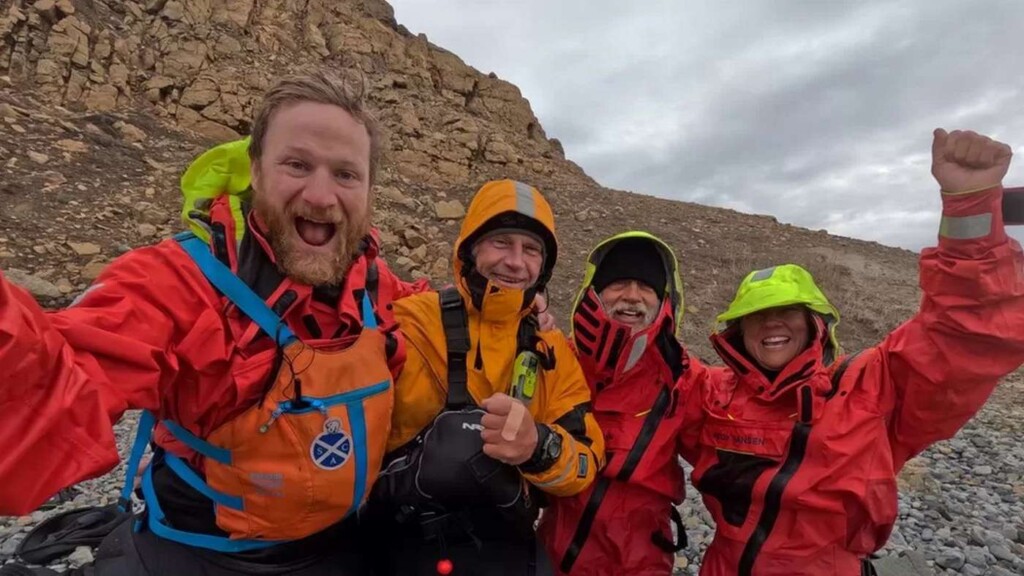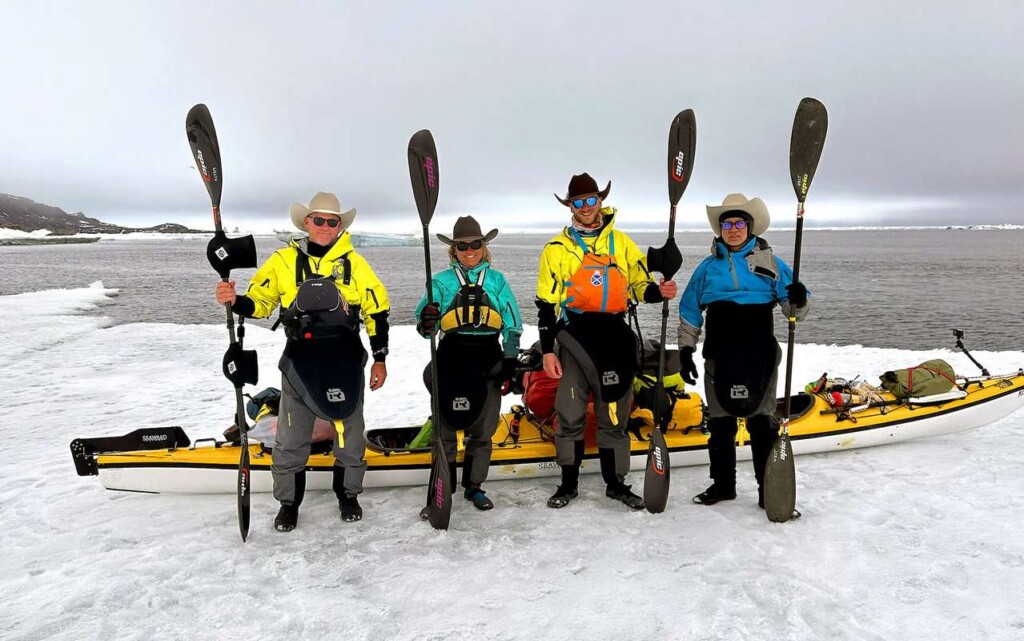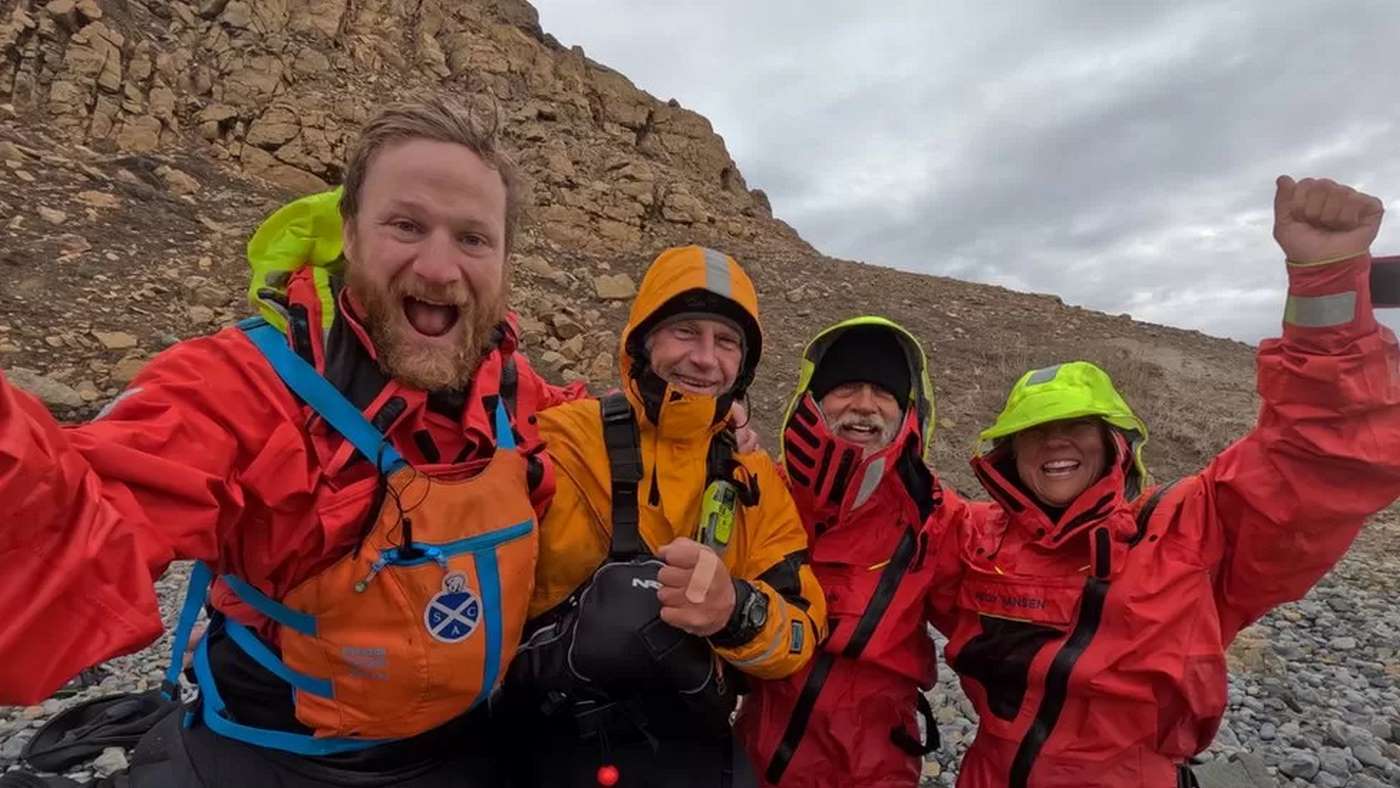
Described as “one of the last great ‘firsts'” the passage from the Atlantic to the Pacific through the Canadian Arctic was, for the first time ever, rowed by an expedition of 3 men and 1 woman.
West Hansen, Eileen Visser, Mark Agnew, and Jeff Wueste, who together styled themselves the “Arctic Cowboys,” set off in July and also became the first to make the crossing with kayaks in a single season, with the team needing just 83 wet, frigid, and largely grueling days to complete the journey of 1,600 miles.
62-year-old Wast Hansen is a legendary endurance kayaker and adventurer. He once paddled the entire 4,000-mile path of the Amazon River from source to sea, a feat he replicated on the Volga years later. Both experiences informed his organizing of this expedition.
This was an altogether different feat, however, and one that has been several years in the making.
The Northwest Passage has been crossed in boats many times before. In 1990, it was traversed by Jonathan Waterman, an explorer who used almost every mode of non-motorized transport you can think of.
In 2018, Hansen was putting the Arctic Cowboys team together and hoped to raise $70,000 for the expedition from sponsors. With just $10,000 accumulated, COVID-19 and weather delayed the trip until 2022, when he made his first attempt along with Wueste and another paddler.
“Primarily, the wind is the biggest concern,” Hansen told Texas Monthly prior to his 2022 attempt. “We’re prepared for snow and ice and rain, but the wind will create choppy waves and difficult paddling conditions.”
Severe weather completely interrupted their trip, and it almost ruined this year’s expedition as well, pinning them down at the entrance of the Passage near Baffin Bay for 2 weeks mostly on account of moving sea ice.

Throughout their voyage they suffered perpetually from the elements, with Mark Agnew, who became the first Scot and the first Brit to make the crossing with a paddle, saying his feet essentially never warmed up the whole trip.
“The biggest challenge was the sea ice,” Agnew told the BBC, saying their early July start meant that a lot of the ocean was still frozen. “We became trapped in the ice a lot. There was this one occasion in particular where we were trapped in the ice and two icebergs began to ram together with us in between. I thought we were going to be crushed to death.”
OTHER GREAT FEATS OF EXPLORING: 65-Year-old Paddles Into Record Books With Epic 6800-mi Solo Kayak Quest–From Tip of Canada to Florida and Back
According to a blog post shared by Barbara Edington, expedition manager and Hansen’s sister on Monday, the final sixteen miles as the team approached Cape Bathurst on the other side of the remote Northern Territory, were the most harrowing. They involved terrifying 15-foot waves, and a long dark slog through freezing mud and water in the falling snow to find a campsite at the end of the day.
But there was beauty too. They often found themselves looking at beluga whales, narwhals, polar bears, shaggy musk oxen, and caribou. Several times the green of the Aurora Borealis was the backdrop to their paddling.
MORE ROWING CHALLENGES: 23-Year-Old Rows Solo 3,000 Miles Across Atlantic Setting Race Record for Female
At one point a polar bear sat on their tent wall which caused Agnew and another paddler to run outside and begin to scream and throw stones at the beast until it “sauntered off” being previously neither interested in eating them, amazingly, nor in running away.
“It has yet to settle in. I’m still in the mindset of getting the team safely back to their homes,” Hansen, now thirty pounds lighter than when he started, wrote Monday in a text message he sent from a GPS device.
SHARE This Triumph Of Modern Polar Exploring With Your Friends..




















